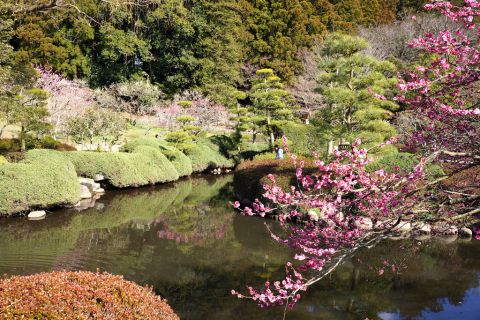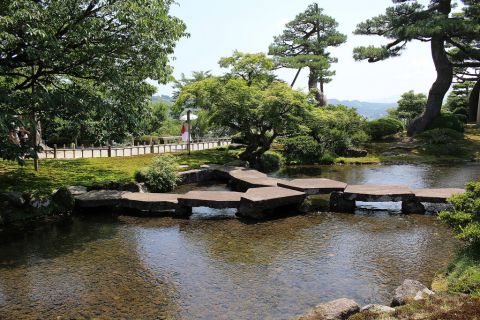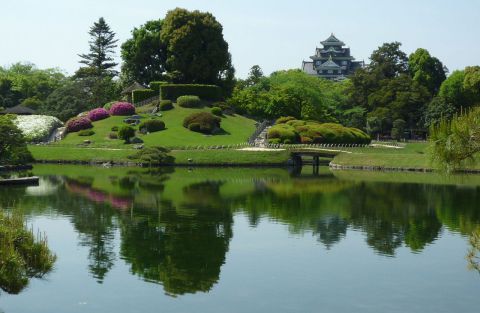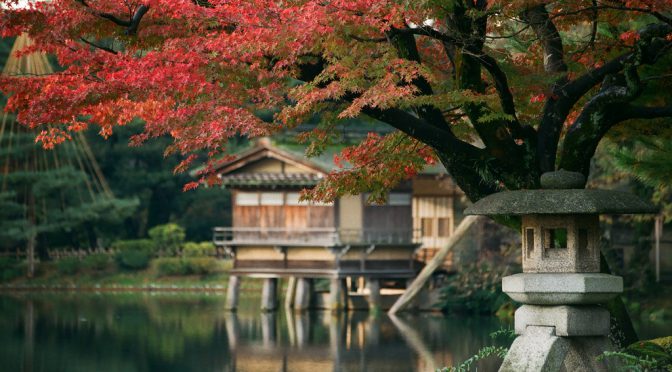Japanese gardens (“nihon teien”) are traditional gardens that were masterfully created to symbolize the Japanese rituals and beliefs and create a perfect landscape. They started off as exclusive resting places for those in the upper classes, and thus most of them were closed to the public. Fortunately, things are different now and anyone can have the chance to admire their beauty. AsianDate takes you to the most renowned Japanese gardens: the Three Great Gardens of Japan.
Follow AsianDate To The Three Great Gardens Of Japan
Kenroku-en in Kanazawa, Koraku-en in Okayama, and Kairaku-en in Mito are collectively referred to as the Three Great Gardens of Japan, (“sanmeien”). They were created to express the perfection of “setsugekka” which comprises of snow, moon, and flowers – 3 aspects of natural beauty at different times of the year that the Japanese absolutely adore.
Kairaku-en, Mito
Kairaku-en means “a park to enjoy with people”. The impressive garden was built in 1841 by local lord Tokugawa Nariaki. Unlike the other two great Japanese gardens ( Kenroku-en and Kōraku-en), Kairaku-en was open to the public from the start.
Kairaku-en looks unbelievable throughout the year but is at its best during the plum blossom season, from late February to March. The plum tree forest, where one can see 100 kinds of different plum trees with white, pink and red blossoms, is the biggest of its kind in Japan, with 3,000 plum trees.
In its 127,000 sq. meters (31.4 acres), Kairakuen also features a bamboo grove, cedar woods and the Kobuntei, a traditional Japanese-style building.

Kenroku-en, Kanazawa
The “6 Attributes Garden” is located in Kanazawa, and it is a private garden. Kenroku-en is regarded as the perfect garden, as it combines everything: seclusion, spaciousness, artificiality, abundant water, antiquity and panoramas. Established in the 17th century by feudal lords, this wonderful garden is located in the heart of Kanazawa.
This intricate garden took various gardening techniques and 170 years to finish. Walk along its circular paths with their large ponds and serene streams, admire the rolling hills and the traditional tea houses, and find your peace of mind in the unique combination of natural beauty and man-made architecture in Kenroku-en.
The garden is open year-round during daylight. It is very famous among visitors for including the oldest natural-water fountain in Japan, Yūgao-tei, a teahouse that’s the oldest building in the garden, built in 1774, the Flying Geese Bridge, which is made with 11 red stones placed so as to look like flying geese, and the Karasaki Pine, which was planted from seed by the 13th lord Nariyasu from Karasaki.

Kōraku-en, Okayama
The 3rd of the Great Gardens of Japan in located in Okayama, to the north of Okayama Castle. It was created by the order of Tsunamasa Ikeda (the second lord of Okayama Clan) sometime between the 17th and 18th centuries.
The garden was originally created to entertain upper-class guests and it is famous for its vibrant colors throughout the year. In the spring, plum and cherry blossoms color the scenery and give off an intoxicating flowery smell in the air, while irises and lotuses beautifully decorate the garden in the summer, and maple trees have their leaves turned red in the fall, to have everything covered with a white blanket of snow in the winter.
It was made in the Kaiyu (“scenic promenade”) style, which is amazing because it means that the visitor gets a different view at every turn of the path connecting the ponds, hills, tea houses, lawns and streams that the garden hosts.

What are you waiting for? Follow AsianDate to the astonishingly serene gardens of Japan and marvel at the miracles performed where man and nature work in sync.
If you enjoyed reading this travel article, there are more on our blog. If you’re looking for advice on dating and relationships, click here. For those of you looking for love, don’t forget to visit AsianDate, where you can meet amazing Asian ladies.
